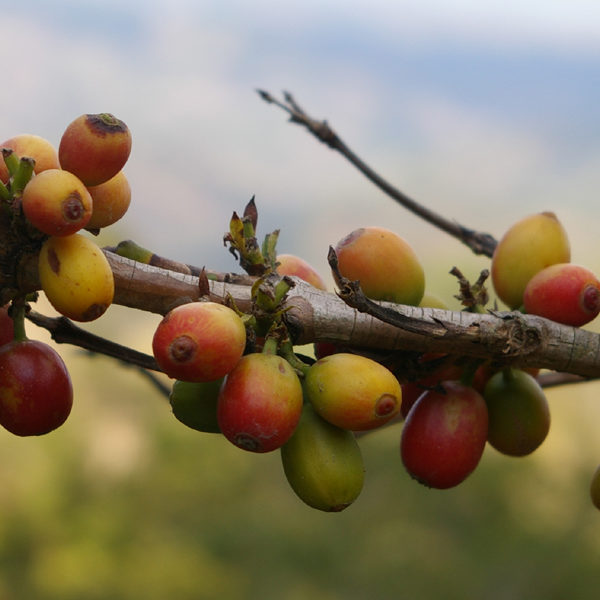How does a coffee bean get from the crop to the cup? The vast majority of specialty Arabica coffee cherries are harvested by hand. It takes about 4,000 cherries to make one pound of roasted coffee. (Since there are usually two beans per cherry, that is about 2,000 beans per pound.) A peaberry, which occurs when only one seed per cherry forms (about 5 percent of all coffee beans are peaberries), results in a bean that is rounder and more uniform in shape. They then go through one of two general methods.
 The first method for processing coffee is called dry-process or natural process; this is the historical method. It uses less machinery and more manual operations. The cherries are dried on a sun patio for up to four weeks. Soaking or rubbing the dried cherry extracts the bean. The resulting coffee has an earthier characteristic and a heavier body with lower acidity. We at Rare Breed Coffee like our naturals. Our Wild Muse is 100% natural.
The first method for processing coffee is called dry-process or natural process; this is the historical method. It uses less machinery and more manual operations. The cherries are dried on a sun patio for up to four weeks. Soaking or rubbing the dried cherry extracts the bean. The resulting coffee has an earthier characteristic and a heavier body with lower acidity. We at Rare Breed Coffee like our naturals. Our Wild Muse is 100% natural.
There are some drawbacks for using this method, though. The drying process can impart taints in the fruit, which are then passed along to the bean. The dry-process is often used in countries where there are longer periods of sunshine.
The other method is called, you guessed it, wet-process. The cherry is mostly removed from the bean. Whatever is left is removed during a process called fermentation. The bean is soaked in a water bath and natural enzymes remove the remaining parts of the cherry.
The wet-process results in a coffee that is cleaner, brighter, and fruitier. The Kenyan, Colombian, and Guatemalan coffees are usually wet-processed. There has been a lot of study on modifying the wet-process fermentation, rest and soak times to create wonderful and unique flavors in the beans.
One new process is call the “pulp-natural” process, or honey process. The outer layer of the cherry is removed, but the mucilage fruity layer is still attached to the bean. The beans are dried with that fruity layer attached, imparting a sweeter, more mild flavor that is still clean. Brazil coffee is commonly a pulp natural.
If the coffee is an estate coffee, it is packed and marked with that estate’s name. If it is part of a co-op, several farmers from the region with the same grade coffee will combine the beans and sell them together. In both cases, the coffee is closely monitored by that country’s government. (Each country has its own grading and labeling methods.)
Brokers in the U.S. will sample, or cup, the beans to determine which ones they are going to buy. During the cupping, they are looking for reasons not to purchase the beans, so in effect, they are looking for imperfections. The price is set by the number of defects, the quality of the taste, and the “C” market in New York. The brokers then sell the beans to the roasters.
The last stage in the transformation of a bright red cherry from an evergreen shrub in some exotic rainforest to the coffee in your cup is the roasting.
A green coffee bean has approximately 200 flavor compounds, but a roasted coffee bean contains about 1,000 flavor compounds. The art of roasting is really about how to pull out the best flavor compounds that are uniquely embedded in each type of coffee. Time, temperature, and the bean determine the roast.
In drum roasting, the style of roasters we use at Rare Breed Coffee, the beans are dumped into the drum and roasted over a constant heat source. The temperature is increased within specific time intervals. In fact, the beans go through several stages called cracks, where the beans actually crack due to the expansion of the moisture in the bean.
During this time, the natural sugars are caramelizing. We determine the roast level for each bean based on cupping the coffee at different levels. Some beans are flexible in that they taste great at a variety of roast levels. Other beans are really only best at one level. Each batch takes approximately 15 minutes. Apart from moisture, the other byproduct from roasting is chaff, the thin papery skin that comes off the bean during roasting. Chaff, along with coffee grounds, is great for the garden.
Ultimately, it is the roastmaster’s responsibility to bring out the best qualities of each bean, based on skill.

